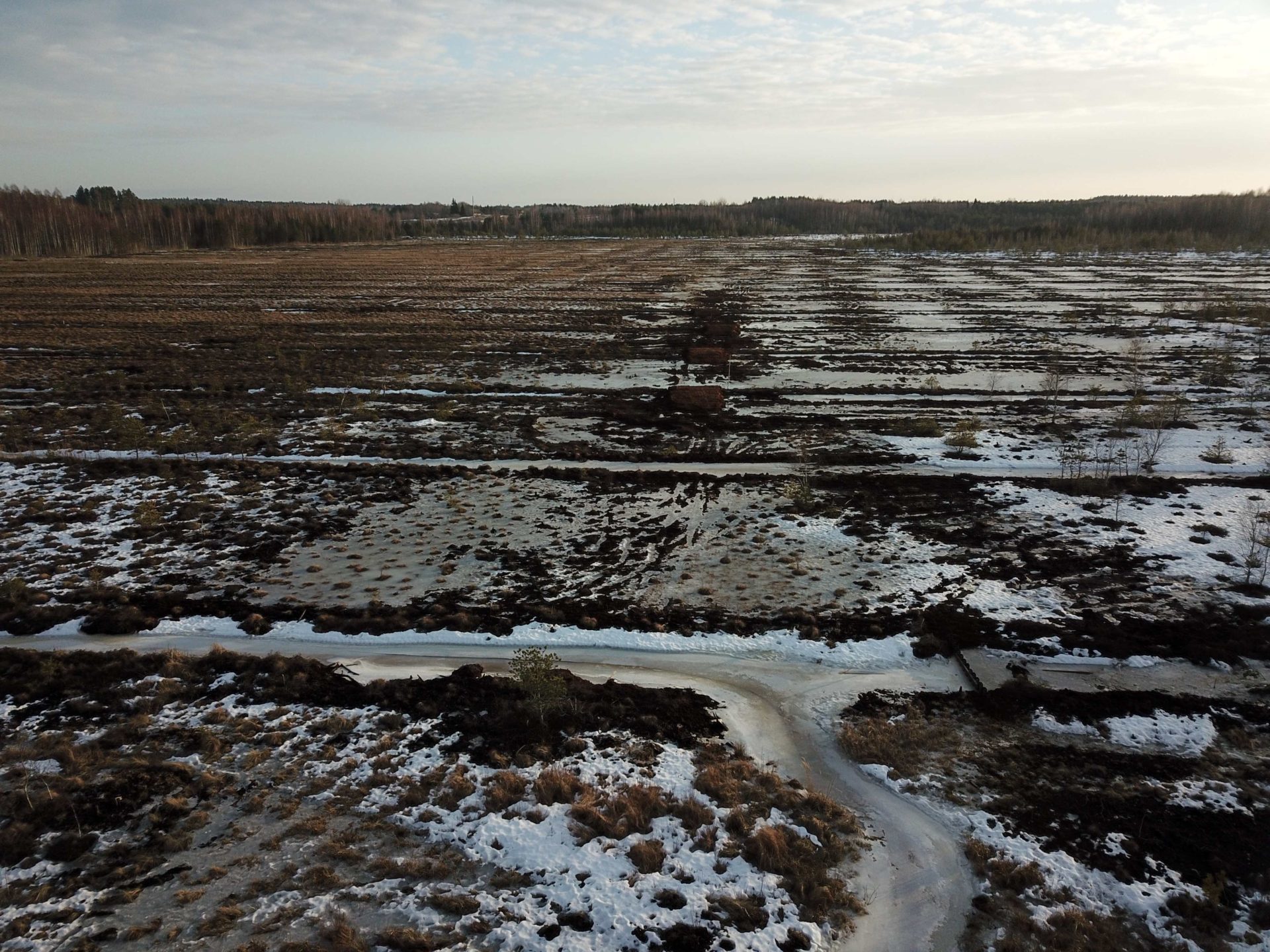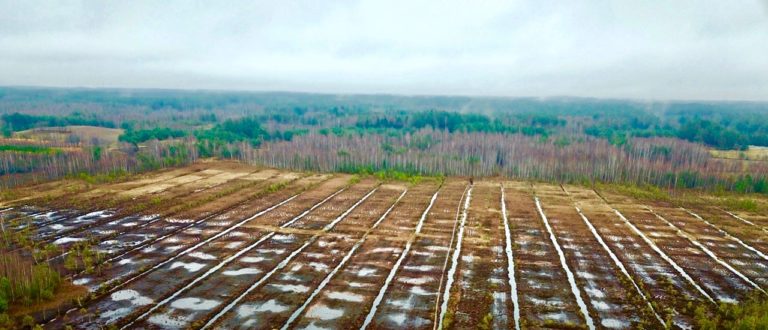Up until mid 20th century, Pūsčia was one of the largest natural raised bogs in the north-eastern part of Lithuania. However, in the 1970s industrial peat mining began and lasted 30 years. The dense network of drainage ditches built (total length of approximately 35 kilometres) dried up the area, resulting in unfavourable hydrological conditions. Unfortunately, the site is currently mostly dominated by bare peat habitats and typical peatland vegetation is severely damaged. Initial restoration attempts implemented in 2000 had only marginal effects so far.

Despite long-term drainage and industrial peat mining, the site maintained fragmented natural features and biodiversity. In fact, today 4 types of Habitats of European importance can be found there: 7120 Raised bogs, Degraded Raised Bogs still capable of natural regeneration, 7150 Depressions on peat substrates of the Rhynchosporion, 7140 Transitional and quaking bogs, 91D0* Bog Forests; also, Black Grouses, Great Grey Shrikes, Cranes and Common Snipes breed in the bog and its surroundings.
Current management efforts continue previous restoration actions and are implemented following the Nature Management plan approved by the Ministry of Environment. The nature management actions in the Pūsčia site started on January, 2019, with the aim to restore the hydrological regime in 81 ha as well as clear the woody vegetation in 32 ha. It is expected that implementing these actions will contribute also to a key aim of LIFE Peat Restore to reduce greenhouse gas (GHG) emissions from degraded peatlands.
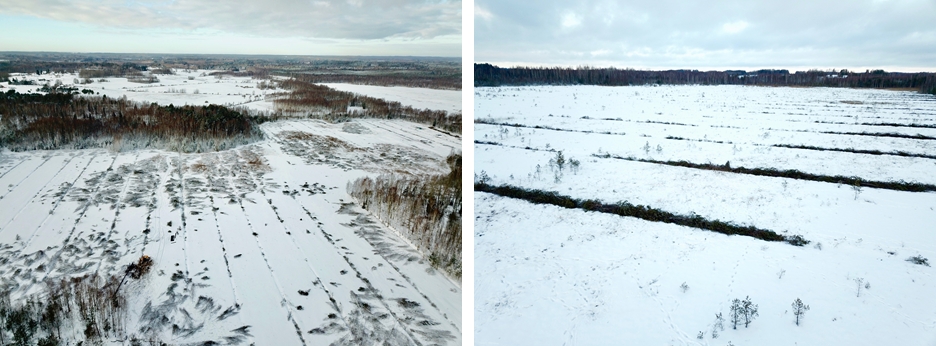
Contrary to what many may believe, the presence of tree coverage does not necessarily mean a habitat is in good conditions. In case of the raised bog peatland habitats, increment of tree growth indicates the degradation of the habitat and negative changes in hydrological conditions. Trees evaporate additional water amounts in the bogs, as a result, mineralization processes accelerate. Therefore, tree clearing improves hydrological conditions and contributes to the improvement of habitats; also, it helps rare bird species, who depend on open habitats. In Pūsčia site tree clearing was only performed in areas which were not assigned as forest land. Mainly, young birch and pine trees were cut. Whereas the islands of bigger trees scattered through the centre of the bog were left uncut. Trees were cleared manually using the chainsaws and trimmers. Branches of cut trees were used to fill in the drainage ditches, in aims of restoring the damaged landscape of the bog and to create favourable conditions for the establishment of Sphagnum mosses.
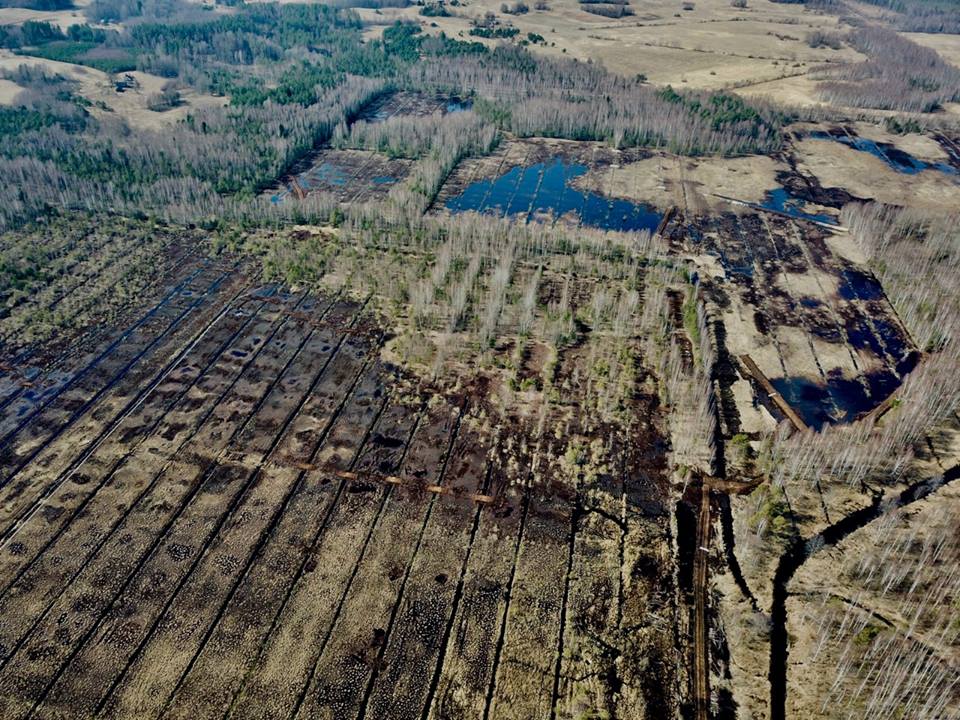
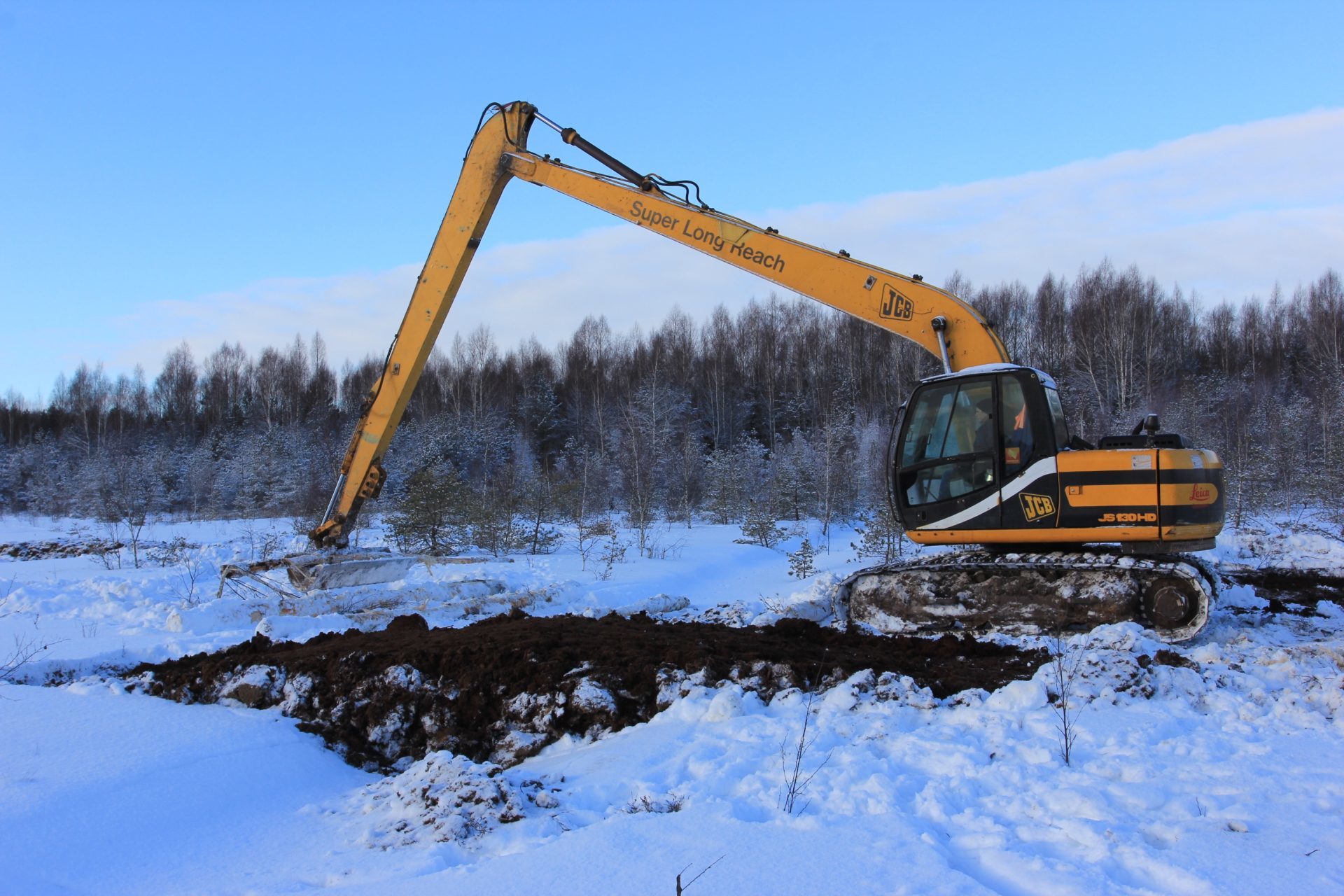
Long-term industrial peat mining and intensive drainage have caused the typical raised bog landscape to be severally damaged and ruined. Piles of bare peat and tree stumps were left. Moreover, some of the draining pipes were difficult to locate. Thus, the preparation of hydro-technical plan and restoration action was very challenging. In order to restore favourable hydrological conditions, 65 peat dams, 35 plastic dams, 3 combined dams were installed and old drainage pipes (more than 100) were dismantled. In areas where bog surface was particularly damaged and uneven, embankments were additionally installed in order to maintain surface water outflow. Altogether 10 protective embankments from peat and plastic (total length 774 m) were equipped.
The conclusion of the implemented action will not only have positive effect on biodiversity and habitat status, but will reduce the GHG emissions as well. Based on recent studies on vegetation mapping and modelling of habitat changes it is presumed that the increase of water level may help to reduce CO2 emissions by 70 %.
